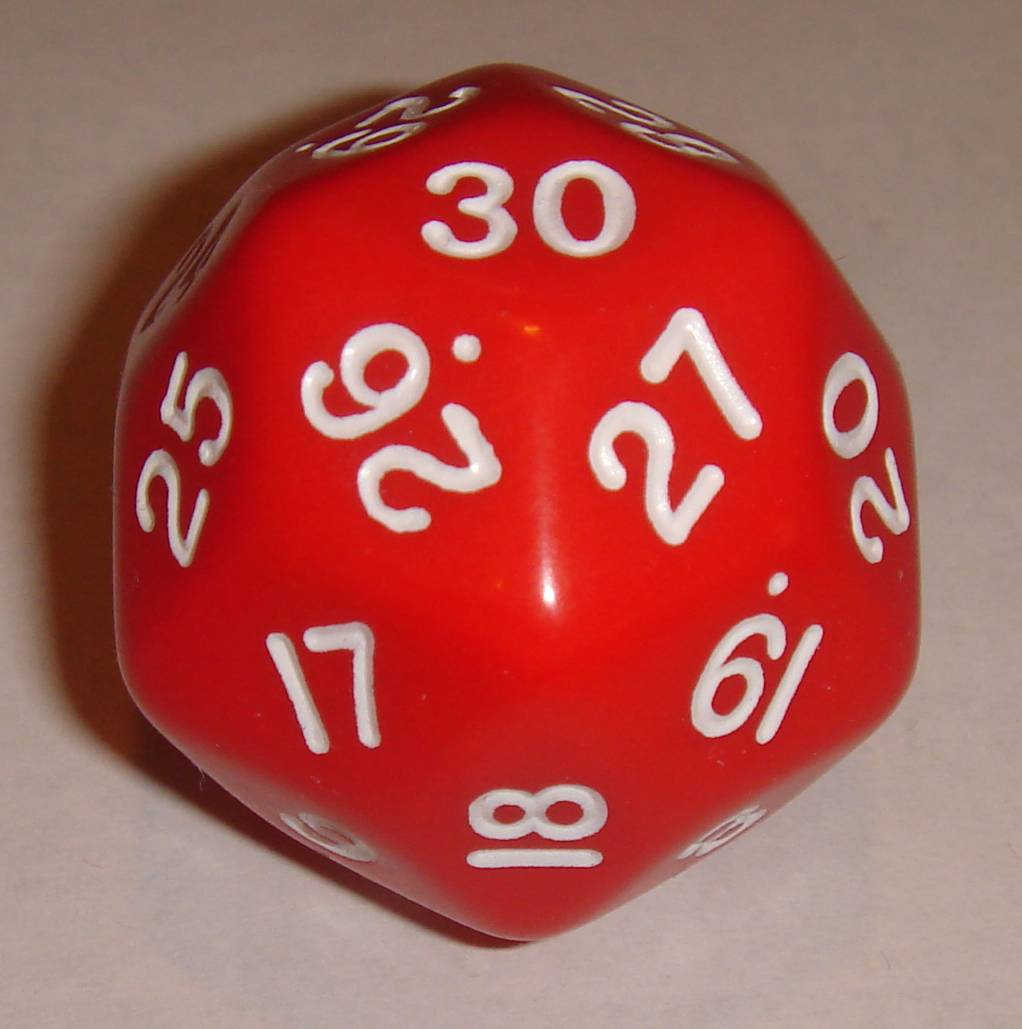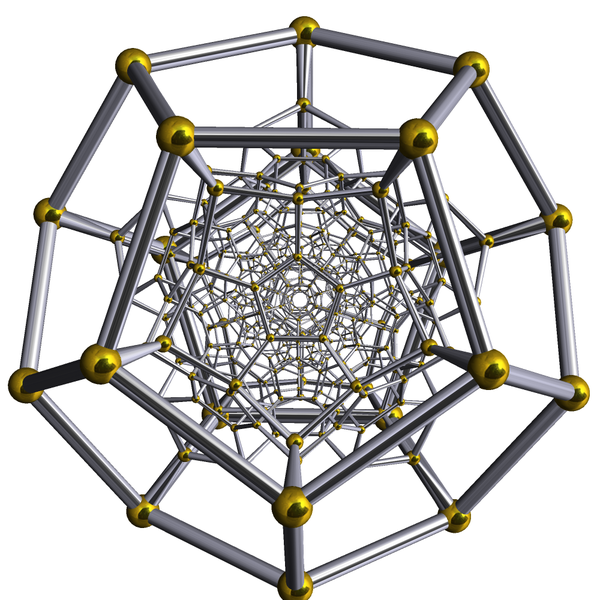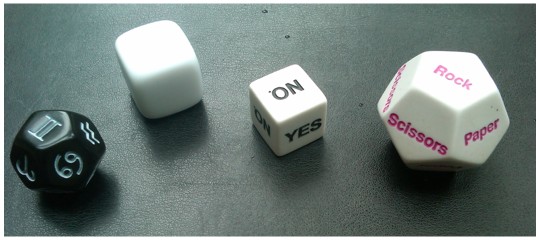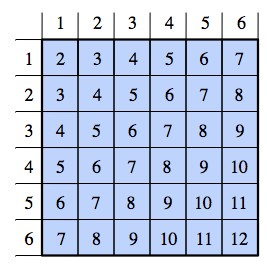The original question was: The five platonic solids (tetrahedron, cube, octahedron, dodecahedron, and icosahedron) are often used in games to make 4, 6,8,12, and 20-sided dice respectively. However, if you renumber the dice using nonnegative whole numbers you can create other pseudo-N-sided dice.
We will call one or more platonic solid dice a “pseudo-N-sided die” if, when we roll them and find their sum they can add to all numbers 1 through N and do so with equal probability. For example:
A cube can be renumbered to be a pseudo-2-sided die.
Two cubes can be renumbered to be a pseudo-12-sided die
Two icosahedrons can be renumbered to become a pseudo-100-sided die
Using any number of platonic solid dice, what is the smallest pseudo-N-sided die you cannot make?
Physicist: A 7 sided die is the smallest that can’t be made using other relabeled dice added together. If you’re not familiar with these games, a “d6” (“dee six”) is the completely standard, cubic die that’s labeled 1 through 6. “2d6” means roll two of these and add them together (like craps).
You’d hope that 1d12 = 2d6, but unfortunately that isn’t the case. Some numbers are more likely to come up (7) and some are less likely (12) and for fair dice each number should be equally likely.
If a sum of properly labeled polyhedral dice can simulate a fair die that would be labeled (1, 2, …, s), then we’ll call s a “D number”. So Right off the bat, labeling the regular polyhedra normally (1,2,3,…), it’s clear that 4, 6, 8, 12, and 20 are D numbers.
Labeling these differently, you get all of their divisors as well. A d6 labeled (1,1,2,2,3,3) is exactly the same as a d3 (as far as generating random numbers is concerned). So, the D numbers are D = {1 (a “doom die”), 2, 3, 4, 5, 6, 8, 10, 12, 20}.
The trick usually used for making a d100 (rather than getting one of those giant goofy ones), is to multiply one d10 by ten and add the second. So, 1d100 = 10(1d10-1) + 1d10.

“96” as represented on two d10’s. d10’s exist because people want to generate numbers between 1 and 10, but they are not regular polyhedra. That said, this could be done with two d20’s labeled 1 to 10 twice.
Doing the same to the weirdly labeled dice you can simulate any fair d(xn), where x is any D number. For example, the dice to get a d81 are: (0, 27, 54), (0, 9, 18), (0, 3, 6), and (1,2,3).
So that expands the list substantially (infinitely). The D numbers now include D = {1, 2, 3, 4, 5, 6, 8, 9, 10, 12, 16, 20, 25, 27, 32, ….}
You can also get dice of the form d(abc…) where a, b, c are D numbers. For example, to create a d30, you could use either 1d30 = 5(1d6-1) + 1d5, or 6(1d5-1) + 1d6. The dice you could use to get this might be (0, 5, 10, 15, 20, 25) and (1,1,1,1,2,2,2,2,3,3,3,3,4,4,4,4,5,5,5,5). You can also get fair d30’s by cheating a little, and building a polyhedra using the same face, but two different kinds of points.

A d30, or “rhombic triacontahedron”, is not a regular polyhedron because it features both 3-edge vertices and 5-edge vertices.
So, every divisor of a D number is a D number, and every product of D numbers is a D number. Rather than listing them, it’s much easier to say: the D numbers are those that can be formed using any combination of the primes 2, 3, and 5. Numbers like this comprise a lot of the lower numbers (9 out of the first 10), but quickly become more and more uncommon (33 out of the first 100). Sadly, there’s no way to construct a fair die with any other prime factor. So, there’s no d7, d11, d13, d14, d17, d21, d22, d23, d26, … The chance that a random, very large, number is a D number is effectively zero.
It turns out that these are the only D numbers. The reason is that, ultimately, you’re dealing with the 5 regular polyhedra, and they determine the size of the “state space”. For example, 2d6 has 36 states (36 = 62). No matter how cleverly the two dice are labeled, those 36 states can never be fairly divided into, say, 5 or 7 outcomes.
The same idea holds true for any number that has prime factors other than 2, 3, and 5, so none of them can be D numbers.
There are of course standard tricks to almost simulate other dice. For example, if you needed to roll a 1d7, what you’d probably do is roll a 1d8 and declare that “8 is a re-roll” (common sense like that is poison to the exotic dice market). In practice, the “re-roll” technique means that real dice can be used to perfectly simulate any non-D-numbered die. For example, you can use a coin to choose between three people by flipping it two or more times: “HH” for Alice, “HT” for Bob, “TH” for Carol, and “TT” for “go again”.
But very technically, it’s impossible to simulate a fair d7 using fair polyhedral dice (same is true for an non-D-number). The best you can do is have seven possibilities that are all equally likely, and an eighth (or more) that is less likely. For example, if you allow up to three rolls, then the only way to have not selected a number from 1 to 7 using 1d8 is to have rolled three 8’s in a row; a chance of 1 in 512. If you could re-roll forever, then the chance that you’ll always roll an 8 is zero. However, if you plan to do anything with your life (other than to accurately simulate one roll of a single d7 using a d8, while also living forever), then at some point you’ll have to stop rolling dice. No matter how long you spend trying, there’s a tiny chance that you never stop seeing 8’s. Therefore, a d8 can never quite simulate a d7, because there’s always a “null-result”. That said, if you see an 8 more than 15 times in a row, then congratulations: you are now the most lucky person ever!
This has nothing to do with the question, but: In two dimensions every die is available; a square is a d4, a septagon is a d7, a tridecagon is a d13, etc. But that’s boring.
In four dimensions the D numbers are the same, because the available dice would be a d5, a d8, a d16, a d24, a d120, and a d600. This is more kinds of dice than can be found in any other dimension! Four dimensions is kind of a paradise for mathematics; just enough wiggle room that surprising stuff shows up, but not so much that it’s boring.

The d120. If you put a light right above one of the faces of a giant, clear d12 you get a funky shadow on the ground. If you do the same (analogous) thing to the d120 in four dimensional space, you get a “shadow” that looks like this. The “faces” of the d120 are the cells contained by the edges and (weirdly enough) the exterior itself.
In X-dimensional space (X=5,6,…), the only dice are the d(X+1), the d(2X), and the d(2^X). These are the higher-dimensional versions of the d4, d6, and d8. So, you can have a d13, but you’d have to go to at least 12 dimensions. In fact, if you want a die with X sides, you just need to be a nerd in (at most) an X-1 dimensional universe.
The purple dice picture is from here.










14 Responses to Q: What fair dice can be simulated by adding up other dice?